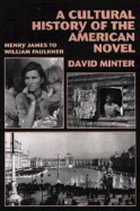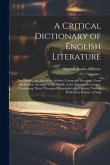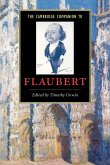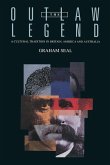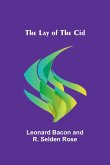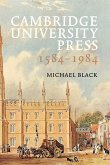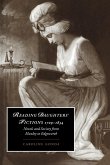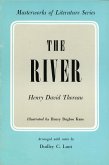- Broschiertes Buch
- Merkliste
- Auf die Merkliste
- Bewerten Bewerten
- Teilen
- Produkt teilen
- Produkterinnerung
- Produkterinnerung
This account of America reconstructs literary history as a cultural drama out of which novels and the events emerge as kindred forms of cultural expression.
Andere Kunden interessierten sich auch für
![A Critical Dictionary of English Literature: And British and American Authors, Living and Deceased, From the Earliest Accounts to the Middle of the Ni A Critical Dictionary of English Literature: And British and American Authors, Living and Deceased, From the Earliest Accounts to the Middle of the Ni]() Samuel Austin AlliboneA Critical Dictionary of English Literature: And British and American Authors, Living and Deceased, From the Earliest Accounts to the Middle of the Ni36,99 €
Samuel Austin AlliboneA Critical Dictionary of English Literature: And British and American Authors, Living and Deceased, From the Earliest Accounts to the Middle of the Ni36,99 €![The Cambridge Companion to Flaubert The Cambridge Companion to Flaubert]() Timothy Unwin (ed.)The Cambridge Companion to Flaubert37,99 €
Timothy Unwin (ed.)The Cambridge Companion to Flaubert37,99 €![The Outlaw Legend The Outlaw Legend]() Graham SealThe Outlaw Legend31,99 €
Graham SealThe Outlaw Legend31,99 €![The Lay of the Cid The Lay of the Cid]() Leonard BaconThe Lay of the Cid17,99 €
Leonard BaconThe Lay of the Cid17,99 €![Cambridge University Press 1584 1984 Cambridge University Press 1584 1984]() Michael BlackCambridge University Press 1584 198436,99 €
Michael BlackCambridge University Press 1584 198436,99 €![Reading Daughters' Fictions 1709 1834 Reading Daughters' Fictions 1709 1834]() Caroline GondaReading Daughters' Fictions 1709 183431,99 €
Caroline GondaReading Daughters' Fictions 1709 183431,99 €![The River (Masterworks of Literature) The River (Masterworks of Literature)]() Henry David ThoreauThe River (Masterworks of Literature)50,99 €
Henry David ThoreauThe River (Masterworks of Literature)50,99 €-
-
-
This account of America reconstructs literary history as a cultural drama out of which novels and the events emerge as kindred forms of cultural expression.
Produktdetails
- Produktdetails
- Verlag: Cambridge University Press
- Seitenzahl: 296
- Erscheinungstermin: 13. September 2003
- Englisch
- Abmessung: 229mm x 152mm x 18mm
- Gewicht: 484g
- ISBN-13: 9780521467490
- ISBN-10: 0521467497
- Artikelnr.: 21585588
- Herstellerkennzeichnung
- Libri GmbH
- Europaallee 1
- 36244 Bad Hersfeld
- gpsr@libri.de
- Verlag: Cambridge University Press
- Seitenzahl: 296
- Erscheinungstermin: 13. September 2003
- Englisch
- Abmessung: 229mm x 152mm x 18mm
- Gewicht: 484g
- ISBN-13: 9780521467490
- ISBN-10: 0521467497
- Artikelnr.: 21585588
- Herstellerkennzeichnung
- Libri GmbH
- Europaallee 1
- 36244 Bad Hersfeld
- gpsr@libri.de
A preface in two parts
Acknowledgements
A note on sources, citations and bibliography
Part I. A Dream City, Lyric Years and a Great War: 1. The novel as ironic reflection
2. Confidence and uncertainty in The Portrait of a Lady
3. Lines of expansion
4. Four contemporaries and the closing of the West
5. Chicago's 'dream city'
6. Frederick Jackson Turner in the dream city
7. Henry Adam's Education and the grammar of progress
8. Jack London's career and popular discourse
9. Innocence and revolt in the 'lyric years': 1900-1916
10. The Armory show of 1913 and the decline of innocence
11. The play of hope and despair
12. The Great War and the fate of writing
Part II. Fiction in a Time of Plenty: 13. When the war was over: the return of detachment
14. The 'jazz age' and the 'lost generation' revisited
15. The perils of plenty, or how the twenties acquired a paranoid tilt
16. Disenchantment, flight and the rise of professionalism in an age of plenty
17. Class, power and violence in a new age
18. The fear of feminisation and the logic of modest ambition
19. Marginality and authority/race, gender and region
20. War as metaphor: the example of Ernest Hemingway
Part III. The Fate of Writing during the Great Depression: 21. The discovery of poverty and the return of commitment
22. The search for 'culture' as a form of commitment
23. Three responses: the examples of Henry Miller, Djuna Barnes and John Dos Passos
24. Cowboys, detectives and other tough-guy antinomians: residual individualism and hedged commitments
25. The search for shared purpose: struggles on the Left
26. Documentary literature and the disarming of dissent
27. The Southern Renaissance: forms of reaction and innovation
28. History and novels/novels and history: the example of William Faulkner
Notes
Bibliographical notes
Bibliography
Index.
Acknowledgements
A note on sources, citations and bibliography
Part I. A Dream City, Lyric Years and a Great War: 1. The novel as ironic reflection
2. Confidence and uncertainty in The Portrait of a Lady
3. Lines of expansion
4. Four contemporaries and the closing of the West
5. Chicago's 'dream city'
6. Frederick Jackson Turner in the dream city
7. Henry Adam's Education and the grammar of progress
8. Jack London's career and popular discourse
9. Innocence and revolt in the 'lyric years': 1900-1916
10. The Armory show of 1913 and the decline of innocence
11. The play of hope and despair
12. The Great War and the fate of writing
Part II. Fiction in a Time of Plenty: 13. When the war was over: the return of detachment
14. The 'jazz age' and the 'lost generation' revisited
15. The perils of plenty, or how the twenties acquired a paranoid tilt
16. Disenchantment, flight and the rise of professionalism in an age of plenty
17. Class, power and violence in a new age
18. The fear of feminisation and the logic of modest ambition
19. Marginality and authority/race, gender and region
20. War as metaphor: the example of Ernest Hemingway
Part III. The Fate of Writing during the Great Depression: 21. The discovery of poverty and the return of commitment
22. The search for 'culture' as a form of commitment
23. Three responses: the examples of Henry Miller, Djuna Barnes and John Dos Passos
24. Cowboys, detectives and other tough-guy antinomians: residual individualism and hedged commitments
25. The search for shared purpose: struggles on the Left
26. Documentary literature and the disarming of dissent
27. The Southern Renaissance: forms of reaction and innovation
28. History and novels/novels and history: the example of William Faulkner
Notes
Bibliographical notes
Bibliography
Index.
A preface in two parts
Acknowledgements
A note on sources, citations and bibliography
Part I. A Dream City, Lyric Years and a Great War: 1. The novel as ironic reflection
2. Confidence and uncertainty in The Portrait of a Lady
3. Lines of expansion
4. Four contemporaries and the closing of the West
5. Chicago's 'dream city'
6. Frederick Jackson Turner in the dream city
7. Henry Adam's Education and the grammar of progress
8. Jack London's career and popular discourse
9. Innocence and revolt in the 'lyric years': 1900-1916
10. The Armory show of 1913 and the decline of innocence
11. The play of hope and despair
12. The Great War and the fate of writing
Part II. Fiction in a Time of Plenty: 13. When the war was over: the return of detachment
14. The 'jazz age' and the 'lost generation' revisited
15. The perils of plenty, or how the twenties acquired a paranoid tilt
16. Disenchantment, flight and the rise of professionalism in an age of plenty
17. Class, power and violence in a new age
18. The fear of feminisation and the logic of modest ambition
19. Marginality and authority/race, gender and region
20. War as metaphor: the example of Ernest Hemingway
Part III. The Fate of Writing during the Great Depression: 21. The discovery of poverty and the return of commitment
22. The search for 'culture' as a form of commitment
23. Three responses: the examples of Henry Miller, Djuna Barnes and John Dos Passos
24. Cowboys, detectives and other tough-guy antinomians: residual individualism and hedged commitments
25. The search for shared purpose: struggles on the Left
26. Documentary literature and the disarming of dissent
27. The Southern Renaissance: forms of reaction and innovation
28. History and novels/novels and history: the example of William Faulkner
Notes
Bibliographical notes
Bibliography
Index.
Acknowledgements
A note on sources, citations and bibliography
Part I. A Dream City, Lyric Years and a Great War: 1. The novel as ironic reflection
2. Confidence and uncertainty in The Portrait of a Lady
3. Lines of expansion
4. Four contemporaries and the closing of the West
5. Chicago's 'dream city'
6. Frederick Jackson Turner in the dream city
7. Henry Adam's Education and the grammar of progress
8. Jack London's career and popular discourse
9. Innocence and revolt in the 'lyric years': 1900-1916
10. The Armory show of 1913 and the decline of innocence
11. The play of hope and despair
12. The Great War and the fate of writing
Part II. Fiction in a Time of Plenty: 13. When the war was over: the return of detachment
14. The 'jazz age' and the 'lost generation' revisited
15. The perils of plenty, or how the twenties acquired a paranoid tilt
16. Disenchantment, flight and the rise of professionalism in an age of plenty
17. Class, power and violence in a new age
18. The fear of feminisation and the logic of modest ambition
19. Marginality and authority/race, gender and region
20. War as metaphor: the example of Ernest Hemingway
Part III. The Fate of Writing during the Great Depression: 21. The discovery of poverty and the return of commitment
22. The search for 'culture' as a form of commitment
23. Three responses: the examples of Henry Miller, Djuna Barnes and John Dos Passos
24. Cowboys, detectives and other tough-guy antinomians: residual individualism and hedged commitments
25. The search for shared purpose: struggles on the Left
26. Documentary literature and the disarming of dissent
27. The Southern Renaissance: forms of reaction and innovation
28. History and novels/novels and history: the example of William Faulkner
Notes
Bibliographical notes
Bibliography
Index.

